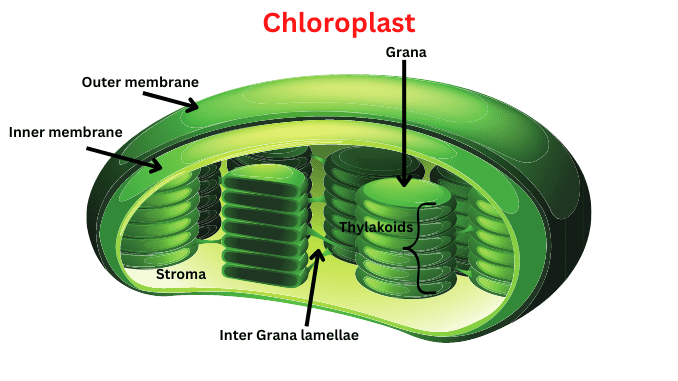
Where do light-dependent reactions occur?
- The light reactions occur in the grana or thylakoid membrane of chloroplast and Involve processes that resemble mitochondrial electron Transport and oxidative phosphorylation. In photosynthetic prokaryotes, which lack Chloroplasts, the light reactions take place in the cell’s plasma membrane or in chromatophores.
- The photosynthesis process takes place in the chloroplast. Chloroplast is the main working point of photosynthesis. Light reaction is the first stage of photosynthesis; it occurs in the grana of chloroplast and the second and last stages of photosynthesis take place in the stroma. Light reactions provide energy to Dark reactions to produce carbohydrates.
Let us understand in detail the part of Chloroplast where the light reactions occur
Chloroplast
- Chloroplast is the site of photosynthesis. Chloroplast consists of a limiting membrane and stroma.
- Chloroplasts Have a highly permeable outer membrane and a nearly impermeable inner membrane separated by a narrow intermembrane space. The inner membrane encloses the stroma.
Stroma
- The plasma membrane is filled with an aqueous transparent material containing proteins called stroma. It contains 50% soluble proteins, ribosome (70S), and DNA. Dark reactions take place in this part of the Chloroplast.
Grana and thylakoid
- It is found inside the stroma. Small cylindrical structures are present in the stroma of higher plants which are called grana and many disc shaped membranous sacs are found in the granum, which are called thylakoids. It is a single highly folded Vesicles.
- Enzymes that are required for photosynthesis are present in the thylakoid membrane.
- Photosystems are present on the thylakoid membrane. There are two types of photosystem, one is PS-I and second PS-II.
- The photosystem is made up of reaction center and accessory pigments which is also called light harvesting complex or antenna. Accessory pigments absorb the sunlight as photons and transfer to chlorophyll-a pair which is present in the reaction center then ATP and NADPH is produced.
Written By: Richa Pachori
